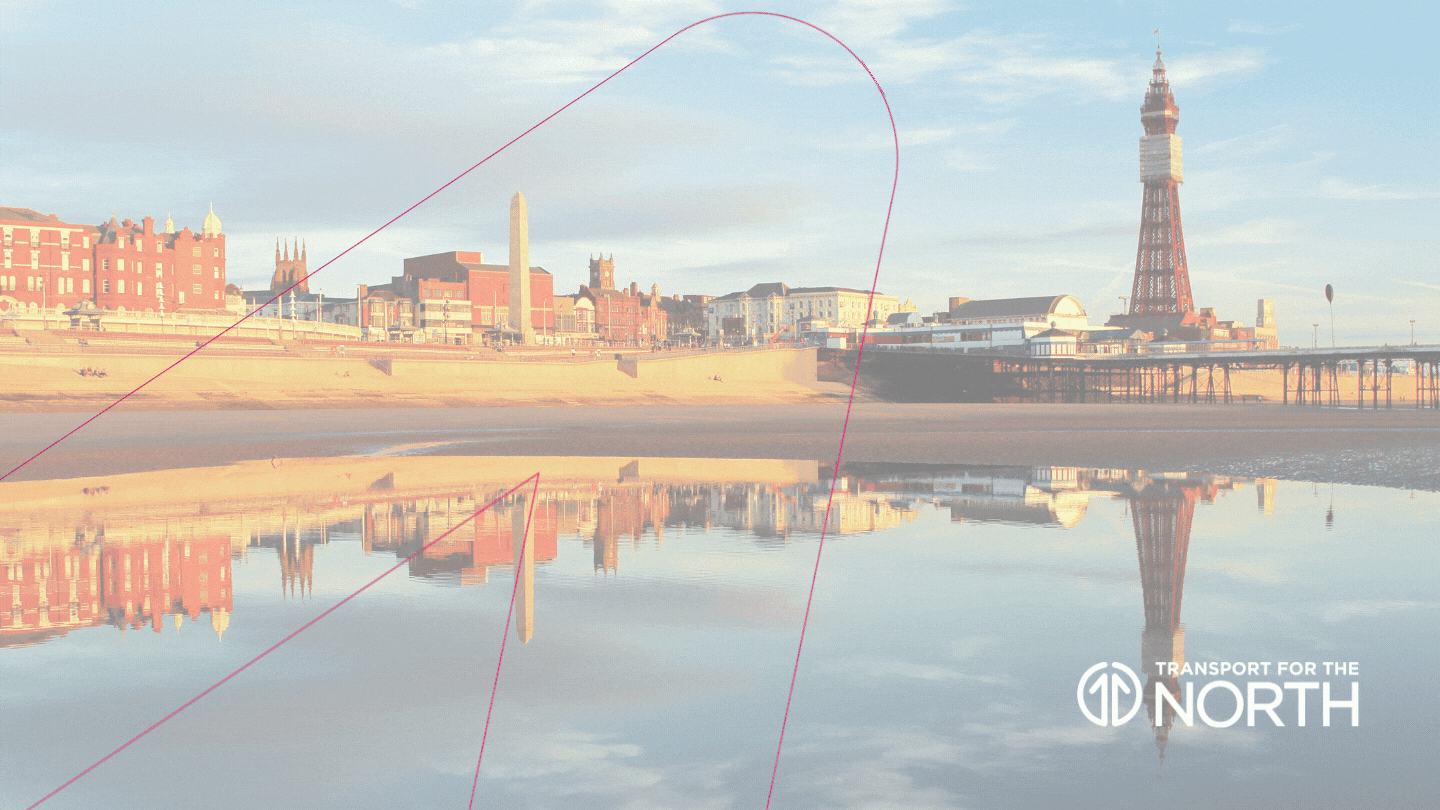Transport for the North has launched a new report presenting the first comprehensive pan-Northern study of the North of England’s visitor economy and its relationship with transport. This new research identifies for the first time the value that the sector brings to the region’s economy, and identifies ways in which transport improvements could boost the visitor economy and contribute to transformational economic growth in the North.
In early 2021, Transport for the North commissioned Atkins and Leisure Consultancy Ltd to identify the latest evidence on the importance and value of the visitor economy across the North of England, to identify the role of transport in supporting the North’s visitor economy, and to develop recommendations for transport-related interventions to support the sustainable recovery and future growth of the North’s visitor economy.
The visitor economy is a term describing the economic contribution resulting from individuals visiting an area outside their usual environment for a range of different purposes, such as holidays, leisure, cultural and sporting events, retail, festivals, business meetings, conferences and exhibitions, education, and visiting friends and relatives.
The visitor economy is a hugely important aspect of what makes a place attractive to live and work in, visit, or invest in. This is a result of the wide range of benefits that a thriving visitor economy facilitates – the visitor expenditure it brings to a place, employment opportunities it supports, improved quality of life that it offers for local residents, and its ability to raise the profile and recognition of a place and attract additional economic activity.
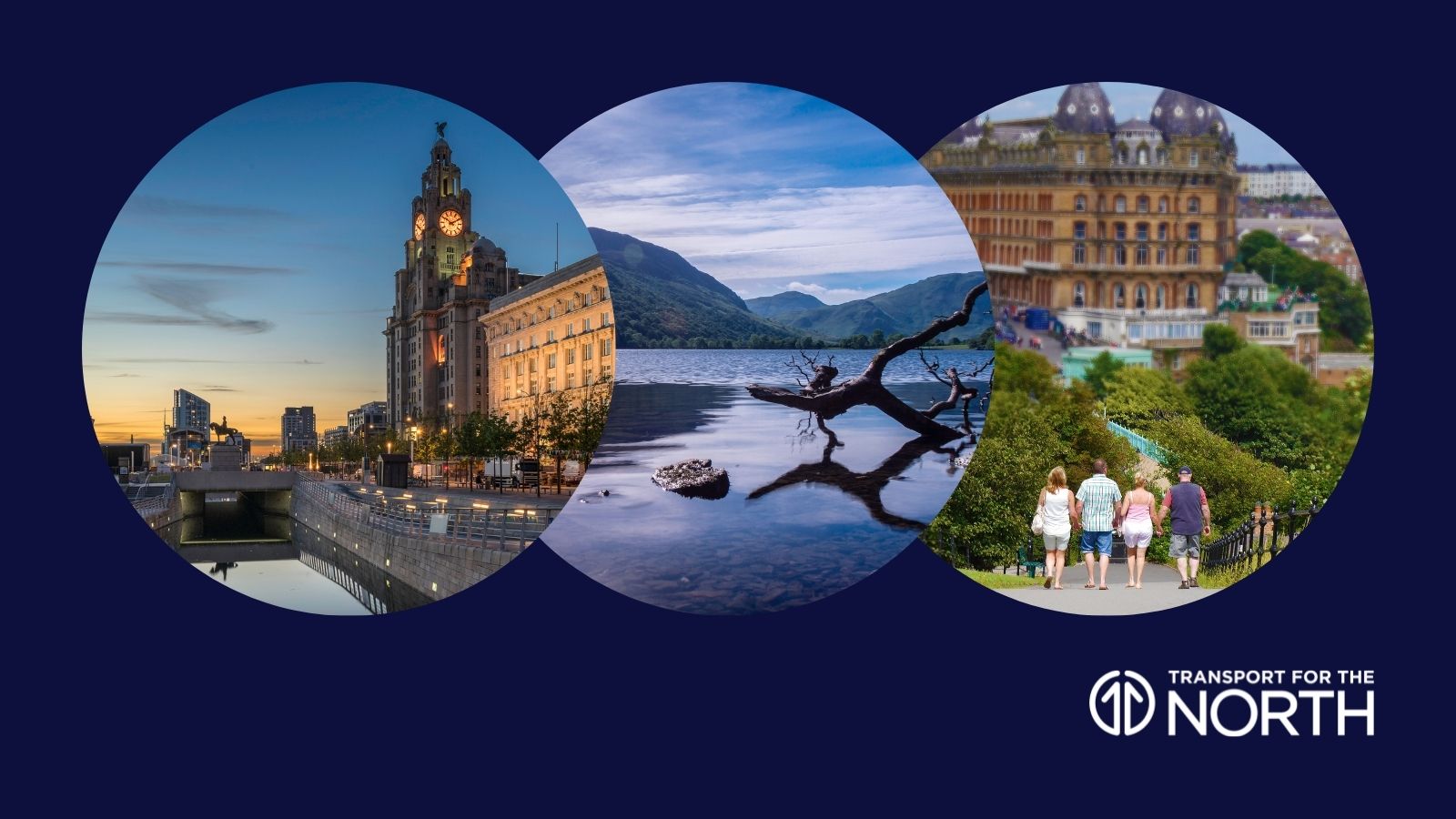
There is a long-standing symbiotic relationship between the visitor economy and transport.
The visitor economy regularly provides a significant level of demand on the transport network, and the expansion and improvement of the transport network enable the growth of many visitor destinations. Historically, the development of the transport network facilitated the growth and development of many of the UK’s popular tourist resorts.
As the UK emerges from the Covid-19 pandemic-related lockdowns, domestic leisure travel has been recovering much faster than commuter travel, as people look to go out, socialise and explore again.
While new patterns of transport demand are challenging the historical links between transport and the labour market, with significant growth in remote working likely in many industries, the relationship between transport and the visitor economy remains as strong as ever.
Excellent transport remains crucial for enabling visitors to get to the North and explore the region, as well as enabling Northern residents to visit other parts of the North. Transport for the North wants to better understand what the changing travel patterns for commuting and leisure mean for the North’s transport network. In particular, we want to know what it means for the public transport network, where there is an opportunity to work more innovatively with transport providers to ensure services meet the needs of leisure travellers. This is increasingly important in the post-pandemic context where the demand for domestic tourism and leisure is growing.
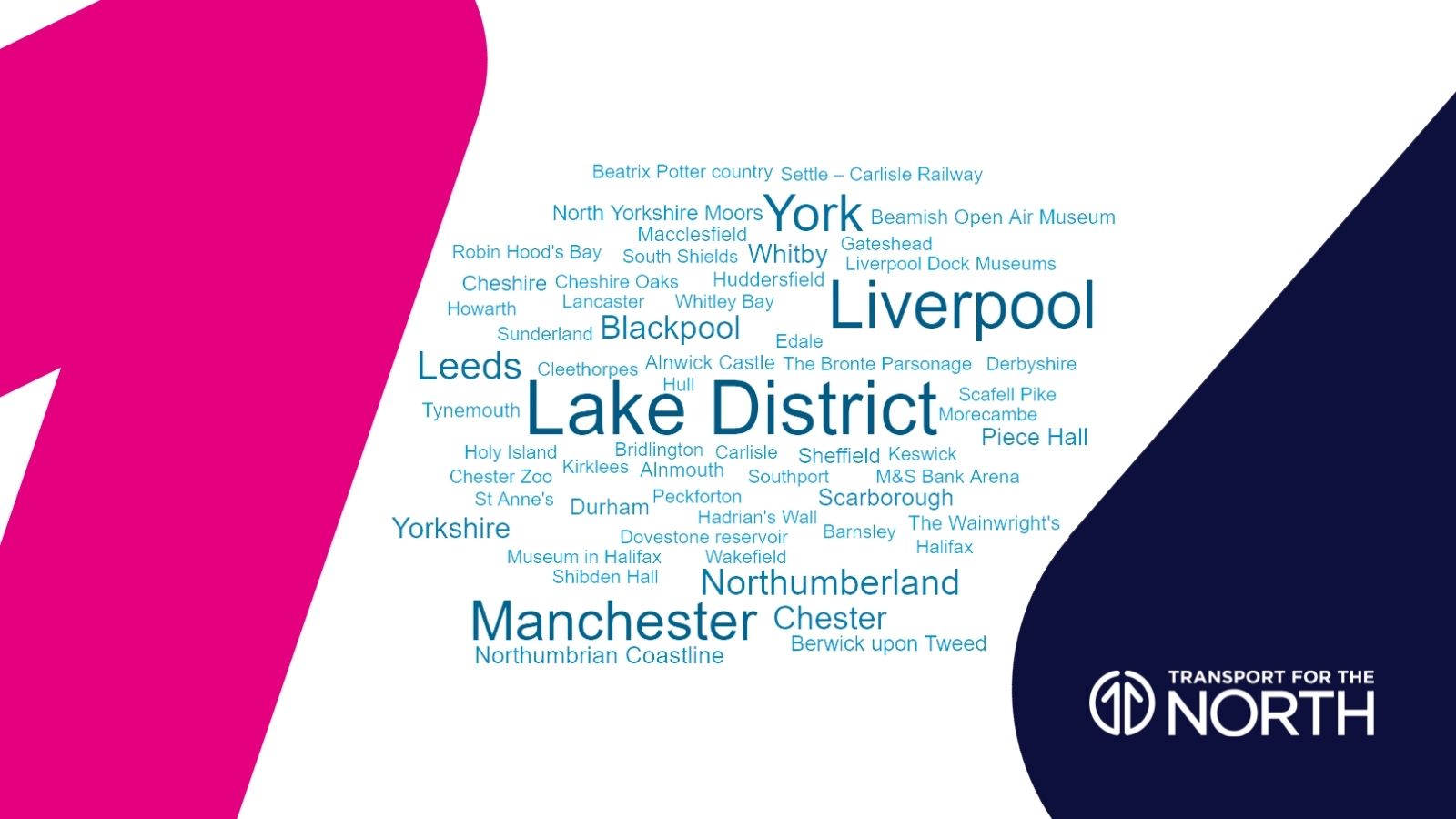
At Transport for the North, we want to strengthen the evidence base on the value of the North’s visitor economy and the ways in which transport investment can support the visitor economy to flourish.
This study will form part of our evidence base when setting out future strategic plans and providing statutory advice on transport in the region. The findings will contribute to the development of the next iteration of our Strategic Transport Plan, and the continued development of the Northern Powerhouse Independent Economic Review evidence base, both of which outline the potential for transformational economic growth across the North of England, supported by targeted transport interventions connecting people to economic and leisure opportunities.
The study forms one element of a holistic approach to ensuring that considerations relating to the visitor economy remain an integral part of all aspects of our work, including evidence gathering, transport modelling and appraisal, policy and strategy development, partnership working, and delivery of transport services.
The study has been designed and delivered in collaboration with a related Visitor Economy Modelling and Appraisal commission seeking to improve the representation of the visitor economy in transport modelling, appraisal and business case development. It has also informed the development of a pan-Northern Rail Tourism Action Plan which considers the post-Covid potential of a strategic action plan to claw back lost ridership targeting the leisure and tourism travel market, both to grow this and to support the decarbonisation agenda through modal shift from car travel to greater use of public transport in tourism areas.
The study has provided an opportunity to convene a large number of strategic stakeholders in the North’s local and city-regional government and in tourism, leisure and transport industries who have for the first time come together at a pan-Northern level to discuss shared ambitions for the North’s visitor economy and the transport improvements needed to support this.

The findings of the study demonstrate the North’s rich and diverse visitor offer and the vital role the visitor economy plays in urban, rural and coastal communities.
The North of England boasts a large array of natural, historical and leisure assets including 5 national parks, 6 areas of outstanding natural beauty, 7 world renowned UNESCO World Heritage Sites, museums of national importance, heritage cities and towns, and large retail centres and event spaces.
This varied range of assets attracted 414 million domestic visits and 6 million international visits to the North in 2019, contributing more than £12 billion to the North’s economy. People visit the North for a variety of purposes, including visiting friends and relatives, going on a day out/night out, going on a longer holiday, or taking a business-related trip.
The visitor economy sector is a significant provider of employment in the North, directly supporting 39,000 businesses and 579,000 jobs, while also supporting many more jobs indirectly through the supply chain.
The visitor economy is an important feature of urban, rural and coastal communities across the North, and in many places accounts for a significant share of local economic activity. For example, Cumbria and North Yorkshire have some of the highest shares of overall economic output which is attributable to tourism in comparison to all other UK sub-regions.
The value of the visitor economy extends far beyond what is quantifiable in monetary terms – the sector also plays an important role by enhancing quality of place, enhancing quality of life for residents, and promoting the conservation of local natural and historical assets.
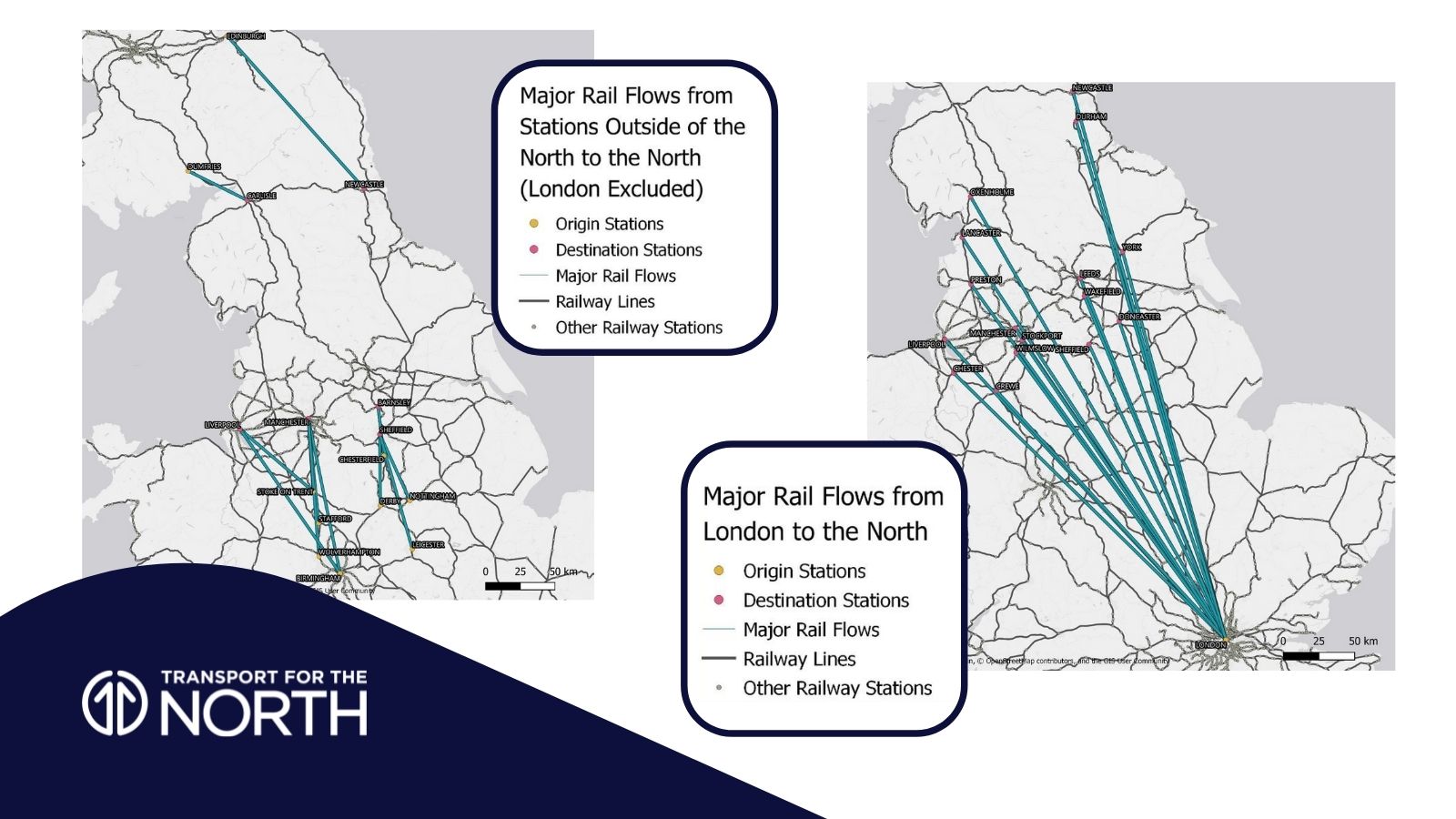
Transport is a key enabler for the visitor economy, and this study has identified that the North’s transport network supports significant flows of visitors, particularly from the North’s urban areas to other urban areas, rural and coastal areas within the North, as well as from other urban areas in Britain to the North.
The private car is the dominant transport mode for visitor journeys to and from, as well as within the North. Rail is more likely to be used for visitor journeys from other regions to the North than for visitor journeys within the North.
While visiting the North, many shorter journeys are undertaken by walking, particularly in coastal and rural areas, although visitors to the North make fewer shorter trips by bicycle than average, and for longer trips, taxis are often more popular than public transport.
Many areas in the North are characterised by sparse rail and bus services with limited operational hours which do not support the visitor economy, and particularly the night-time economy. This evidence suggests the North’s public transport services are not fully meeting the needs of visitors to the region, leading to an over-reliance on the use of private vehicles for visitor journeys which often results in greater carbon emissions, increased congestion on the road network, car parking issues, while also meaning that residents who do not own a car are unable to access destinations which are not well served by public transport.
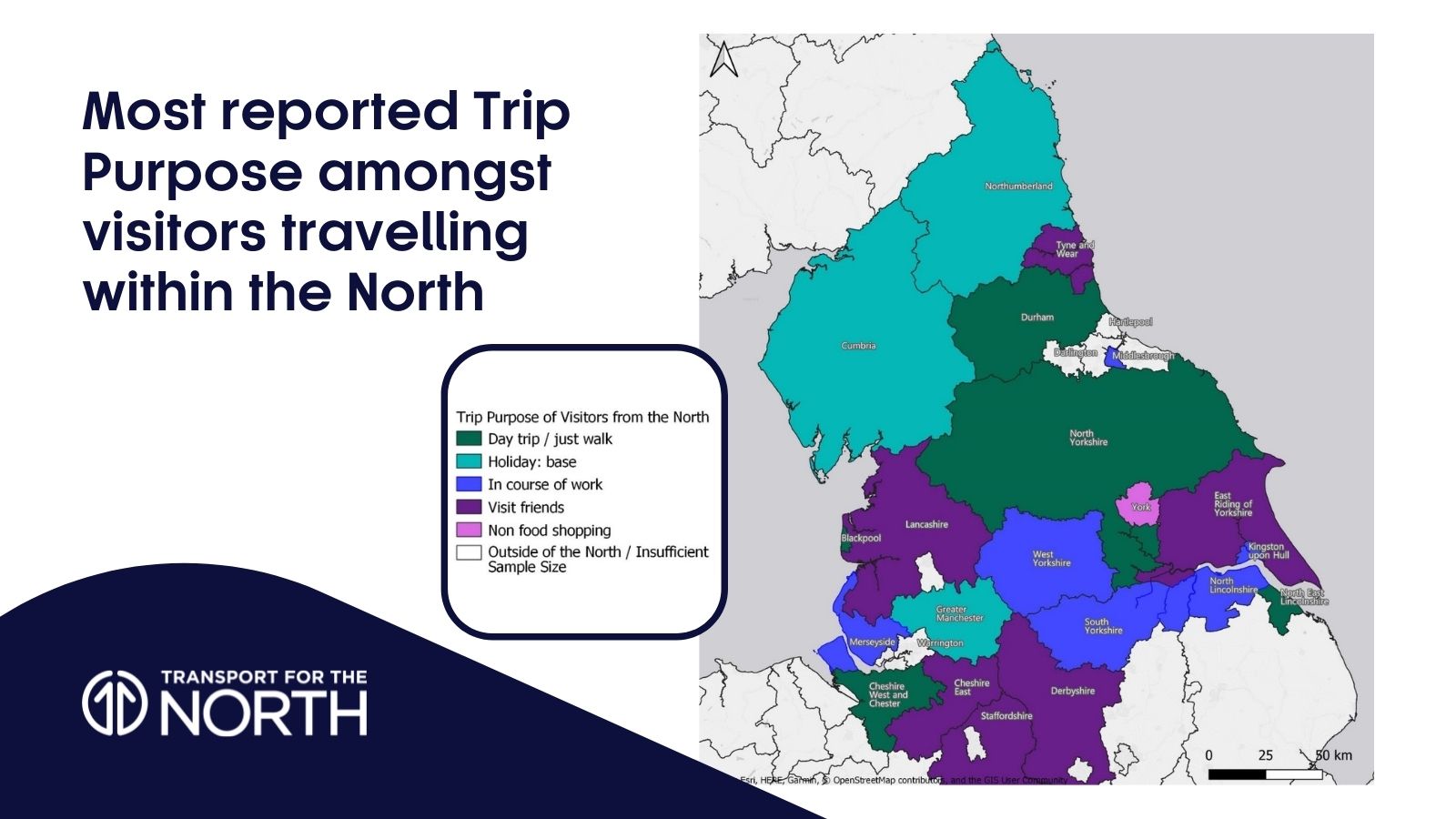
Residents taking part in workshops as part of this study largely expressed an increased preference for “staying local” for their leisure trips in the near future, and many mentioned plans to visit areas in the North for upcoming day trips and longer holidays.
There is a clear opportunity for the North to benefit from increased demand for tourism and leisure experiences in the North (including “staycations”) from domestic visitors in the short to medium term. However, increases in demand for tourism and leisure journeys in the North could lead to greater congestion on the transport network around visitor economy hotspots (particularly on the road network, considering the current levels of use of private cars for visitor trips), as well as increased carbon emissions.
Many of the residents taking part in this study described a number of barriers to using public transport for visitor journeys they have experienced, including high cost of travel and poor value for money relative to using a private car, confusing ticketing options, restricted levels of service particularly in the evenings and on weekends, poor connectivity in rural areas, unreliability of services, and different accessibility and inclusion issues, particularly for families, passengers with mobility or other health issues, and those travelling with bikes or heavy luggage.
Finding ways to encourage visitors to use public transport, micro-mobility and active travel more will be key to a sustainable growth in the North’s visitor economy.
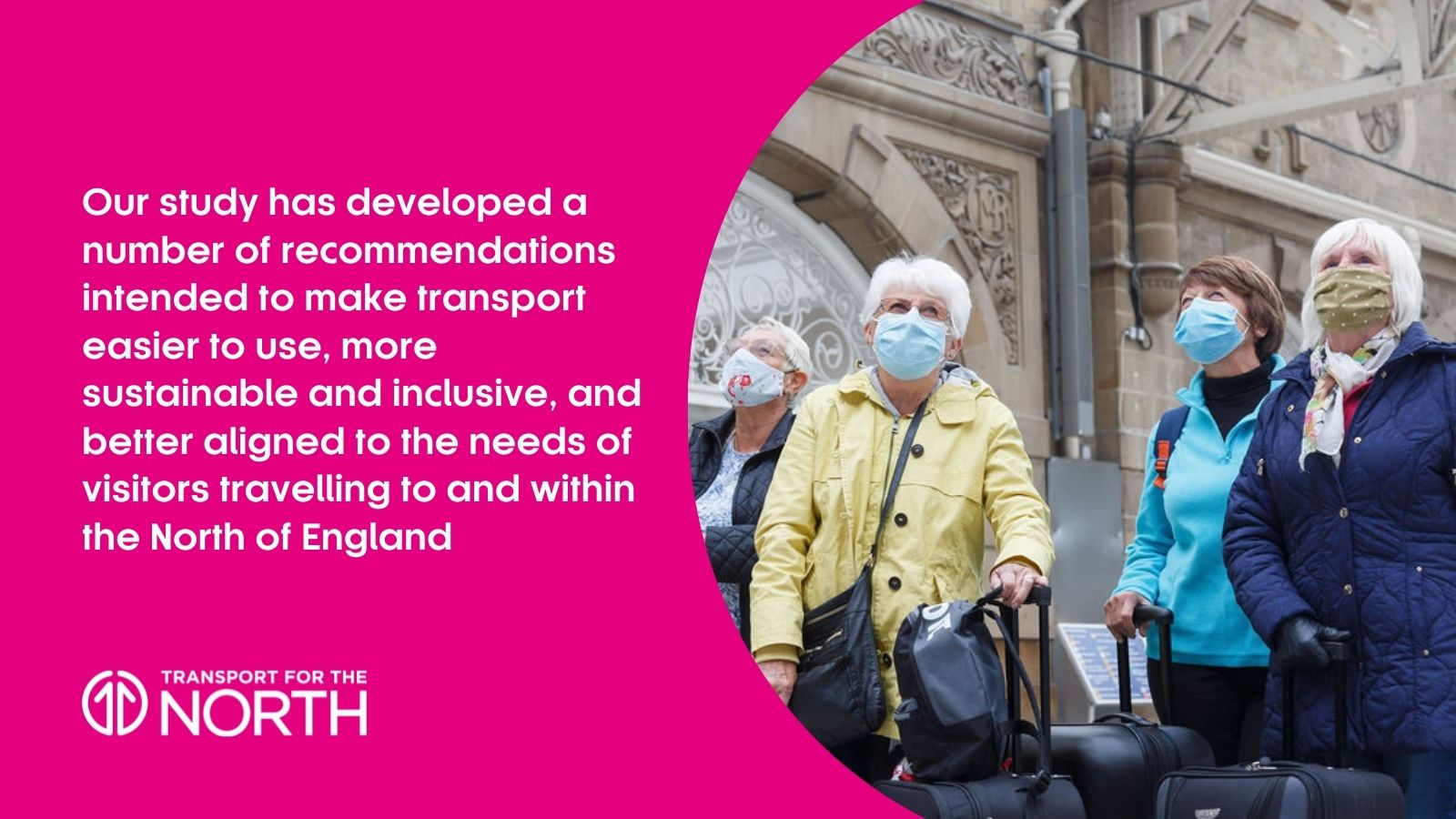
In response to the opportunities and challenges identified, the study has developed a number of recommendations intended to make transport easier to use, more sustainable and inclusive, and better aligned to the needs of visitors travelling to and within the North of England, including:
Transport for the North is looking forward to working with our partners and stakeholders to identify opportunities for implementing these recommendations which will boost growth in the North’s visitor economy in a sustainable way, while improving the travel experience of residents and visitors looking to enjoy everything that our region has to offer.
